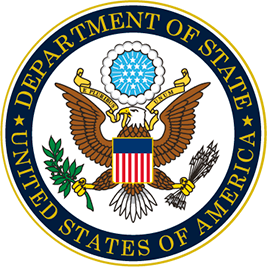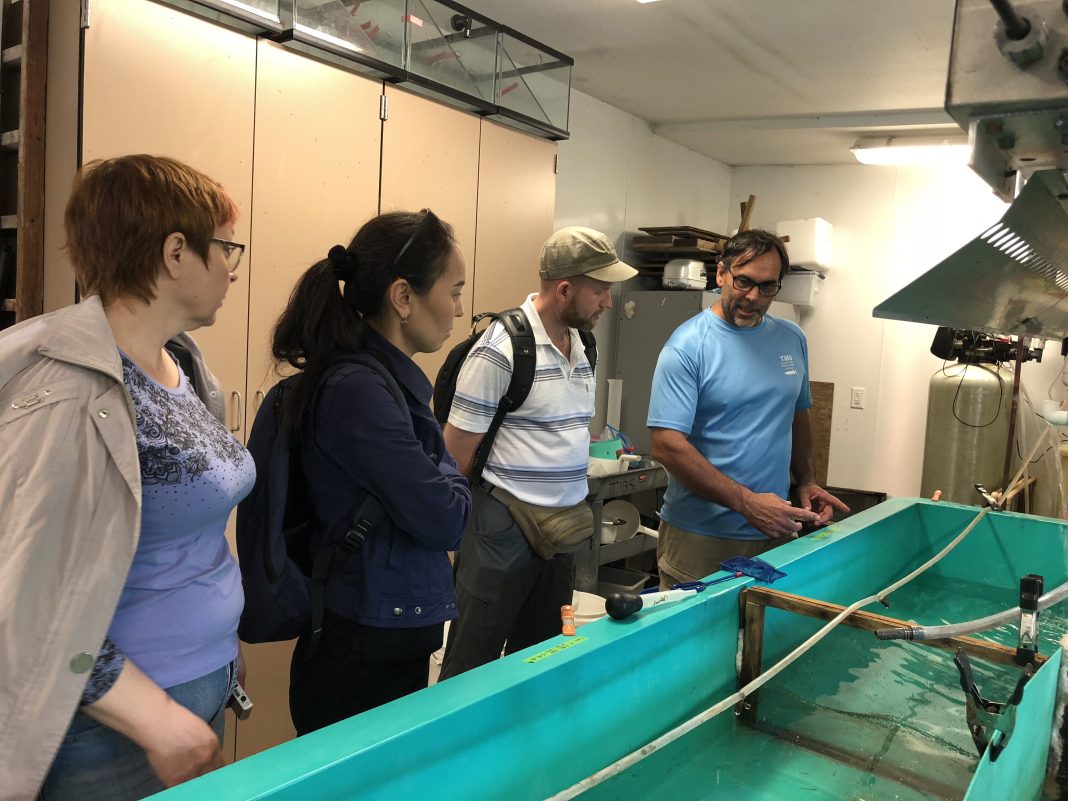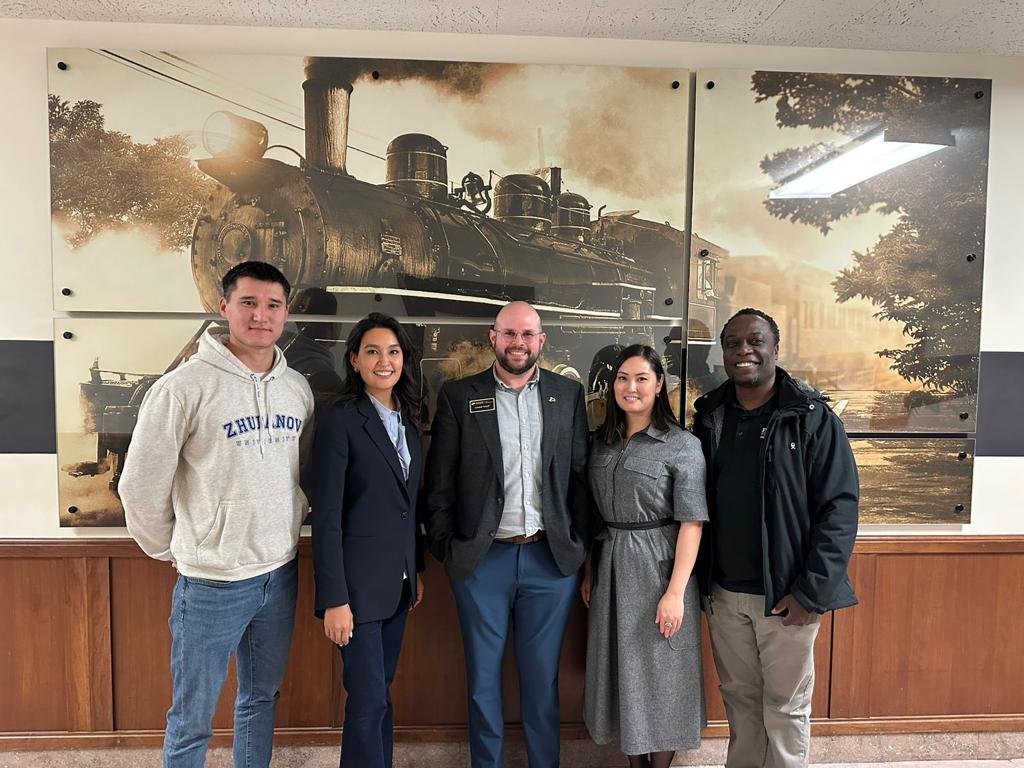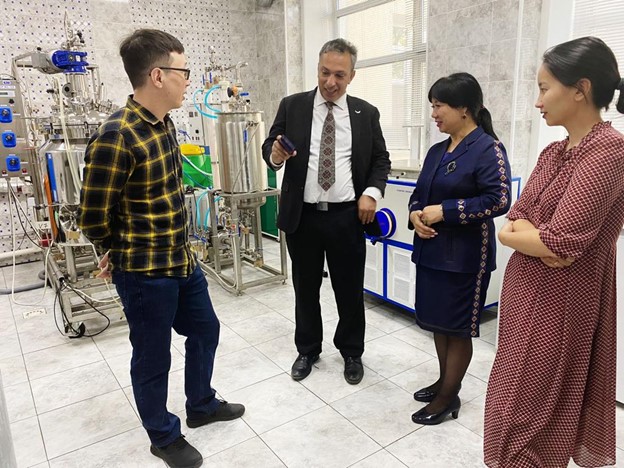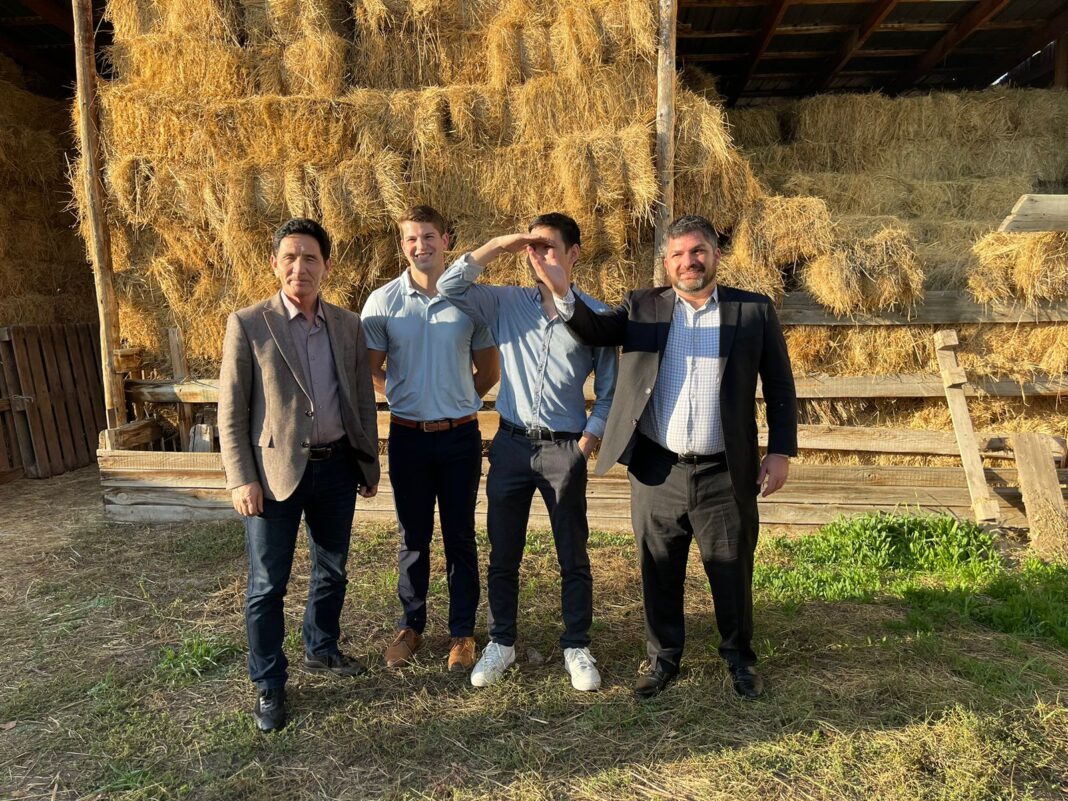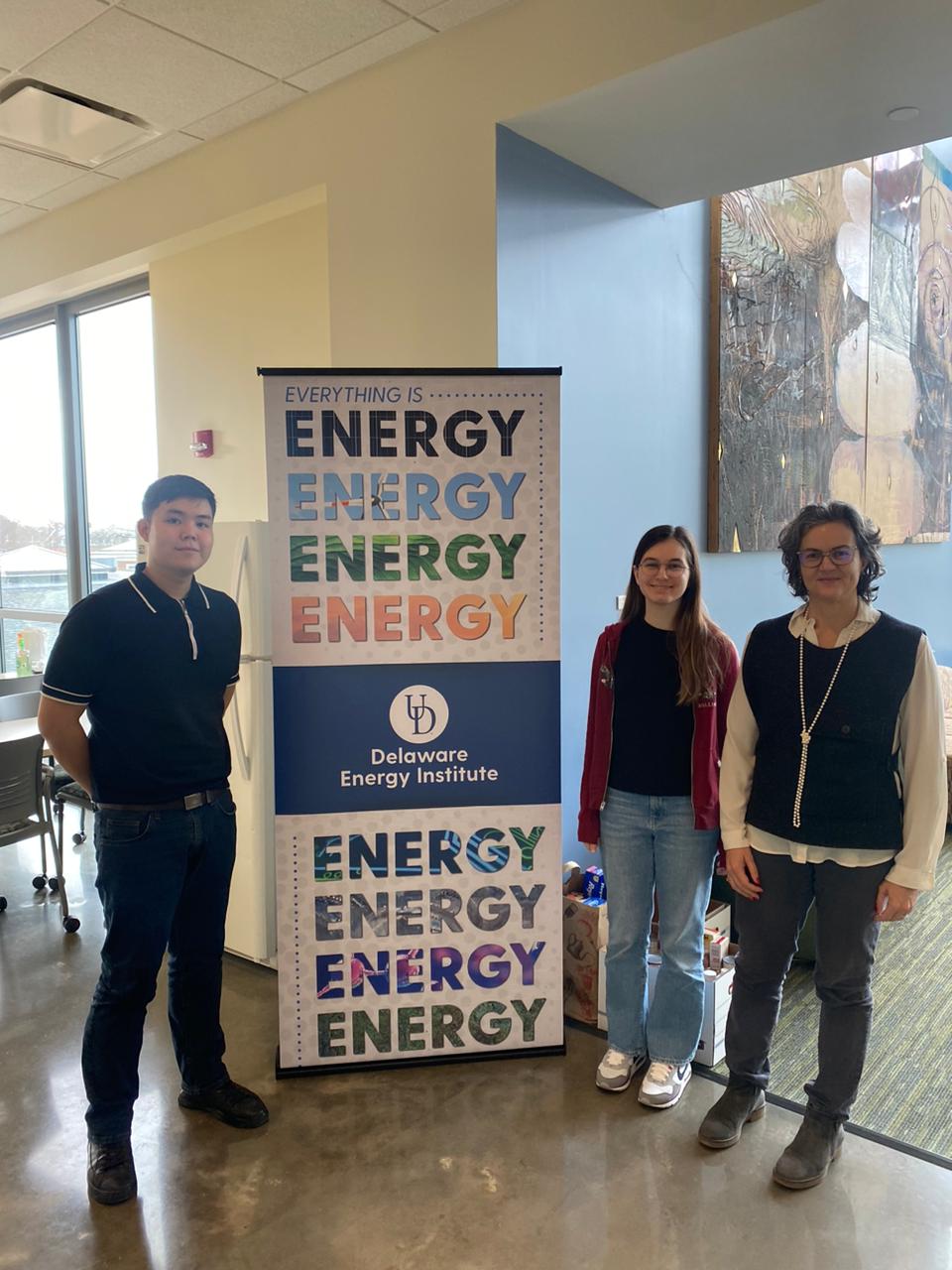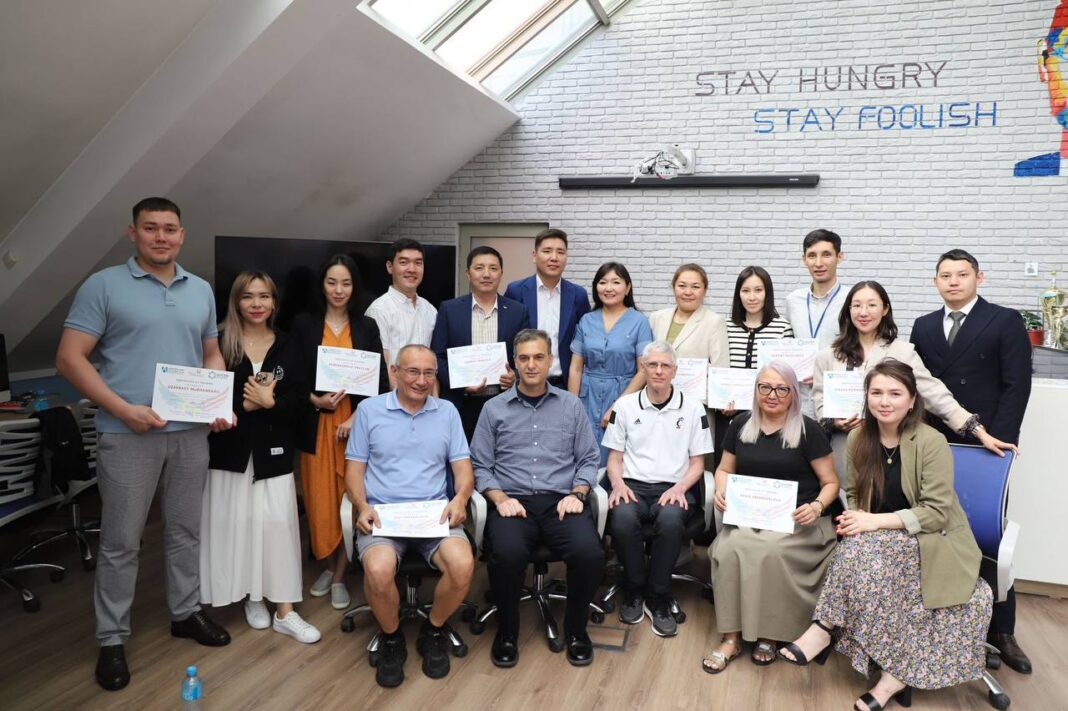The northern steppes of Kazakhstan are a land of two extremes: stretches of pristine natural beauty and patches of contaminated post-industrial landscapes. Less than 100 miles from the Ekibastuz, the industrial heartland of northern Kazakhstan, the Bayanaul mountain range teems with flora and fauna. But the future of the region depends on removing toxic substances from the environment and protecting resources for future generations.
With a grant administered by American Councils for International Education and funded by the U.S. Department of State through the U.S. Embassy in Kazakhstan, a team of scientists from State University of New York College of Environmental Science and Forestry (ESF) and Toraighyrov University launched research collaborations in biodiversity conservation and ecosystem restoration. Researchers exchanged knowledge of the common characteristics of wetlands, forests, and soils and the potential for the remediation of damaged habitat.
From the Adirondacks to the Steppes
First, the team needed to familiarize itself with the habitats in upstate New York and the steppes of northern Kazakhstan, both natural laboratories for climate change. In July 2019, Interim President David Amberg, professors Donald Leopold, Lee Newman, and Guy Lanza traveled to northern Kazakhstan to develop new multidisciplinary teaching and research programs in the environmental sciences.
“We discovered that Pavlodar was similar to Syracuse, New York,” remarks Dr. Lanza, a research professor specializing in aquatic ecology and environmental microbiology. “Both are post-industrial cities trying to change direction. Nearby, there are pristine sites, and lots of serious complex environmental challenges that we could use to collaborate between our institutions.”
ESF and Toraighyrov University scientists conducted field work on environmental remediation, reviewing the major types of contaminants present in the Pavlodar region. The team outlined steps for practical remediation research and training for faculty, students, and government environmental agencies in Kazakhstan based on their exchange of knowledge and expertise.
At Bayanaul National Park, created in 1985 to preserve and restore wildlife, the ESF faculty discovered the untapped eco-tourism potential of the region. “It is breathtakingly beautiful, but not many people go there,” recalls Dr. Lee Newman, associate professor of biotechnology and phytoremediation. “We ran into a National Geographic film crew, explored a cave, and met with the park manager and those responsible for reforestation. We quickly realized that this location would be excellent to create new summer internships for our environmental science students.”
Local Expertise with Global Impact
Several weeks later, four Toraighyrov University scientists conducted fieldwork in the state of New York to learn practical ways to begin the complex task of launching environmental remediation projects. ESF experts in habitat restoration, plant and animal ecology, soil science, wetlands and forestry management, fisheries ecology, and water quality shared insights into local habitats and contaminants.
Scientists from New York state and Pavlodar exchanged best practices on the teaching and research models currently used at their respective institutions, and ESF provided advice by sharing curriculum in soil sciences and in biodiversity to allow students to actively participate in research.
As a result of the collaboration, the two partners established protocols to develop future research collaborations in environmental sciences. Immediately following the COVID-19 pandemic, ESF worked with Toraighyrov University professors to move two of its courses online.
Through a memorandum of understanding, graduates of Toraighyrov University may now continue their post-graduate studies at ESF and take advantage of reduced tuition. ESF and Toraighyrov University continues to explore the launch of joint diploma programs in agrotechnology and biology, and actively mentor agrotechnology doctoral students.
The partnership is poised to prepare a new generation of undergraduate and graduate students for enhanced training and formulate international research. “Partnerships like this are essential for the successful development of education and science in Kazakhstan,” says Viktor Kamkin, an associate professor, who encourages other Kazakhstani universities to explore partnerships with U.S. universities.
Dr. Newman notes that regular and good communications are essential for U.S. institutions looking to form partnerships in Kazakhstan. “Go in with no preconceived notions about starting points,” she advises. “Be honest about what the faculty can do together, and what their needs are. Lots of U.S. universities are reluctant to start new partnerships, but Toraighyrov University was ready because of the high character of the faculty.”
About The Partners
State University of New York College of Environmental Science and Forestry (SUNY ESF)
A specialized, doctoral-degree granting institution, ESF is the oldest and most distinguished institution in the United States that focuses on the study of the environment. Located in Syracuse, New York, ESF operates education and research facilities also in the Adirondack Park (including the Ranger School in Wanakena), the Thousand Islands, elsewhere in central New York, and Costa Rica. The college’s curricula focus on the understanding, management, and sustainability of the environment and natural resources.
Toraighyrov University
Toraighyrov University (formerly Pavlodar State University) is an educational, scientific and cultural center recognized at the regional and national levels. Toraighyrov University is the center of education, science and culture not only in Pavlodar region, but also in the Republic of Kazakhstan. Its mission is to be the intellectual center of the region’s economy. Its vision is to be the best entrepreneurial university in Kazakhstan.

